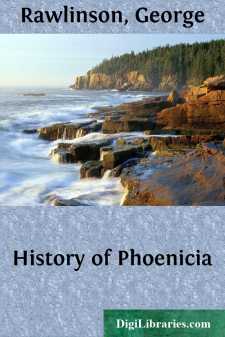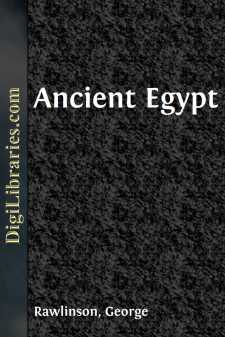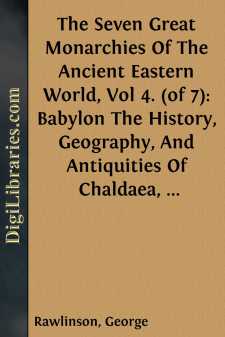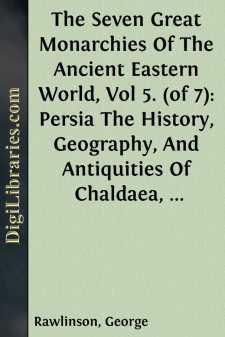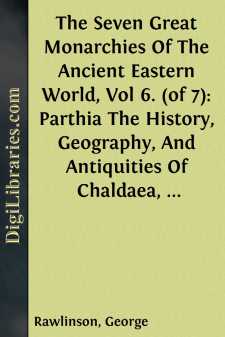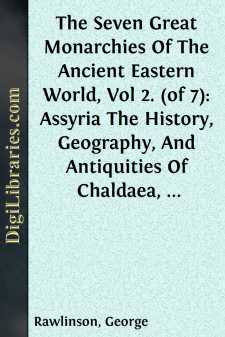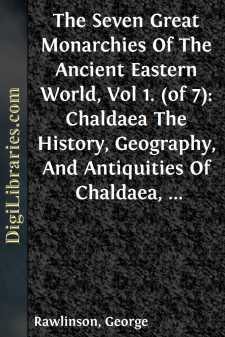Categories
- Antiques & Collectibles 13
- Architecture 36
- Art 48
- Bibles 22
- Biography & Autobiography 813
- Body, Mind & Spirit 142
- Business & Economics 28
- Children's Books 17
- Children's Fiction 14
- Computers 4
- Cooking 94
- Crafts & Hobbies 4
- Drama 346
- Education 46
- Family & Relationships 57
- Fiction 11829
- Games 19
- Gardening 17
- Health & Fitness 34
- History 1377
- House & Home 1
- Humor 147
- Juvenile Fiction 1873
- Juvenile Nonfiction 202
- Language Arts & Disciplines 88
- Law 16
- Literary Collections 686
- Literary Criticism 179
- Mathematics 13
- Medical 41
- Music 40
- Nature 179
- Non-Classifiable 1768
- Performing Arts 7
- Periodicals 1453
- Philosophy 64
- Photography 2
- Poetry 896
- Political Science 203
- Psychology 42
- Reference 154
- Religion 513
- Science 126
- Self-Help 84
- Social Science 81
- Sports & Recreation 34
- Study Aids 3
- Technology & Engineering 59
- Transportation 23
- Travel 463
- True Crime 29
History of Phoenicia
by: George Rawlinson
Categories:
Description:
Excerpt
CHAPTER I—THE LAND
Phoenicia—Origin of the name—Spread of the name
southwards—Real length of Phoenicia along the coast—
Breadth and area—General character of the region—The
Plains—Plain of Sharon—Plain of Acre—Plain of Tyre—Plain
of Sidon—Plain of Berytus—Plain of Marathus—Hilly
regions—Mountain ranges—Carmel—Casius—Bargylus—Lebanon—
Beauty of Lebanon—Rivers—The Litany—The Nahr-el-Berid—
The Kadisha—The Adonis—The Lycus—The Tamyras—The
Bostrenus—The Zaherany—The Headlands—Main
characteristics, inaccessibility, picturesqueness,
productiveness.
Phoenicé, or Phoenicia, was the name originally given by the Greeks—and afterwards adopted from them by the Romans—to the coast region of the Mediterranean, where it faces the west between the thirty-second and the thirty-sixth parallels. Here, it would seem, in their early voyagings, the Pre-Homeric Greeks first came upon a land where the palm-tree was not only indigenous, but formed a leading and striking characteristic, everywhere along the low sandy shore lifting its tuft of feathery leaves into the bright blue sky, high above the undergrowth of fig, and pomegranate, and alive. Hence they called the tract Phoenicia, or "the Land of Palms;" and the people who inhabited it the Phoenicians, or "the Palm-tree people."
The term was from the first applied with a good deal of vagueness. It was probably originally given to the region opposite Cyprus, from Gabala in the north—now Jebili—to Antaradus (Tortosa) and Marathus (Amrith) towards the south, where the palm-tree was first seen growing in rich abundance. The palm is the numismatic emblem of Aradus, and though not now very frequent in the region which Strabo calls "the Aradian coast-tract," must anciently have been among its chief ornaments. As the Grecian knowledge of the coast extended southward, and a richer and still richer growth of the palm was continually noticed, almost every town and every village being embosomed in a circle of palm groves, the name extended itself until it reached as far south at any rate as Gaza, or (according to some) as Rhinocolura and the Torrens Ægypti. Northward the name seems never to have passed beyond Cape Posideium (Possidi) at the foot of Mount Casius, the tract between this and the range of Taurus being always known as Syria, never as Phoenecia or Phoenicé.
The entire length of the coast between the limits of Cape Possidi and Rhinocolura is, without reckoning the lesser indentations, about 380 miles, or nearly the same as that of Portugal. The indentations of the coast-line are slight. From Rhinocolura to Mount Carmel, a distance of 150 miles, not a single strong promontory asserts itself, nor is there a single bay of sufficient depth to attract the attention of geographers. Carmel itself is a notable headland, and shelters a bay of some size; but these once passed the old uniformity returns, the line being again almost unbroken for a distance of seventy-five miles, from Haifa to Beyrout (Berytus)....


